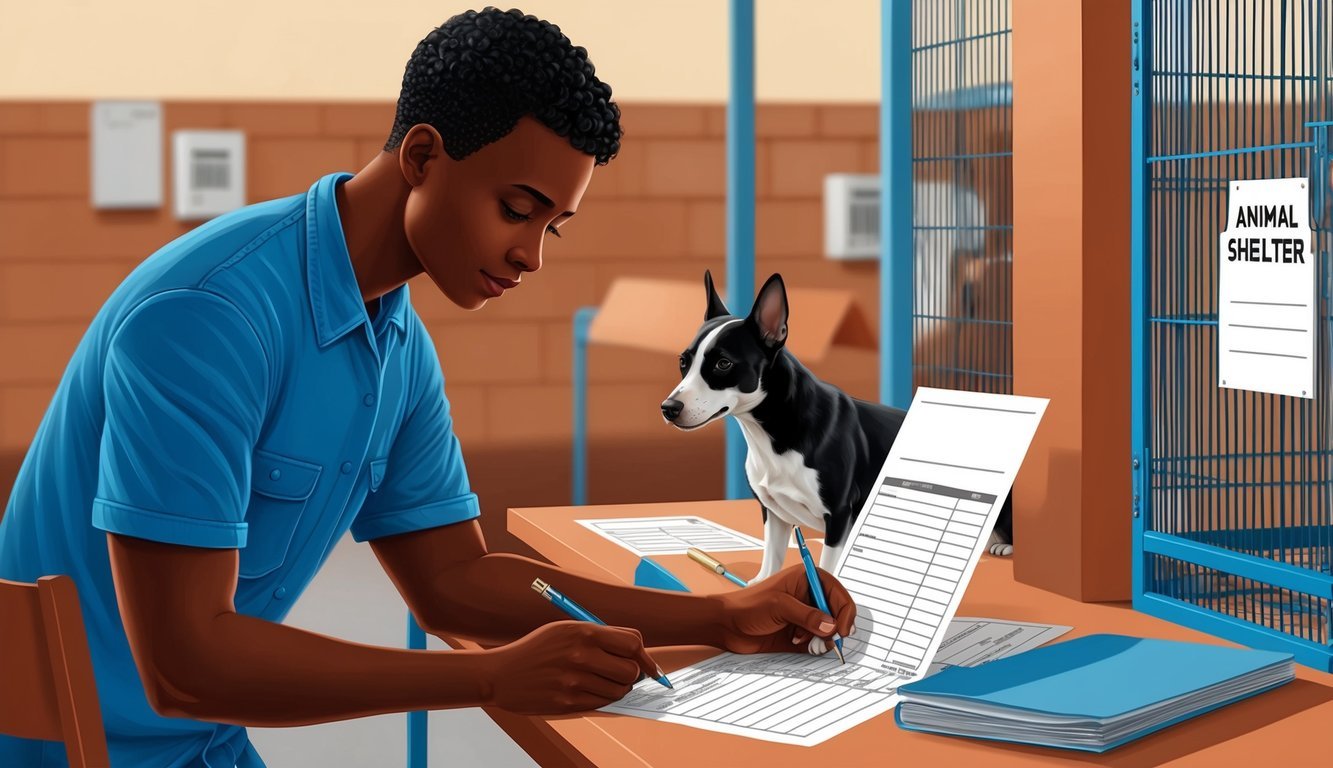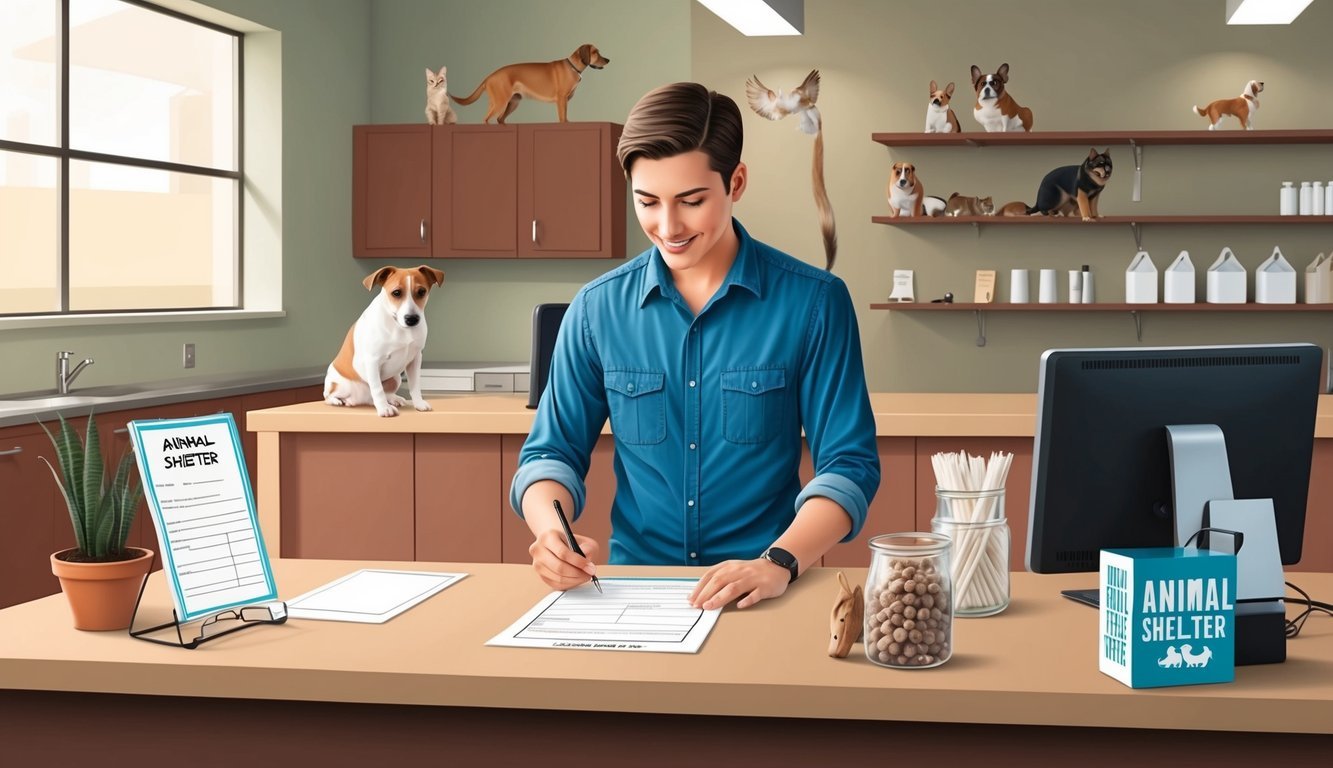“`xml
Adopting a pet from an animal shelter is one of the most rewarding things you can do.
You’re not just giving a furry friend a loving home; you’re literally saving a life! But if you’re unsure about how to kick things off, don’t worry—I’ve got some tips to help you navigate the process.
Getting started is usually pretty straightforward.
First off, you’ll need to fill out an adoption application and chat with the shelter staff.
They’ll ask you a few questions about your living situation and your history with pets to ensure you’re a good match.
Some shelters might even require a small adoption fee or a home visit before you can take your new best friend home.
For those curious about how to sign up for DoorDash, it’s similar: create an account, gather your documents, and pass a background check.

Animal shelters often have loads of cats, dogs, and other pets just waiting for a forever home.
By adopting, you can save a life and add a loyal companion to your life.
Most shelters also have websites where you can already start browsing for available pets.
It’s a great way to get a feel for who’s looking for a home.
Before diving into the adoption process, think about what kind of pet fits your lifestyle.
Consider your space, available time, and budget—having a new pet can be a bit like adding another member to the family!
Once you’ve made up your mind, visit a local shelter or check out their website.
Many shelters allow you to schedule meet-and-greets with pets you’re interested in.
It’s a little like a first date; you want to see if there’s a spark!
Key Takeaways
- Volunteering at animal shelters is another fantastic way to help pets in need.
- The adoption process typically involves filling out an application and connecting with shelter staff.
- Adopting from a shelter saves lives and offers loving homes for pets.
Getting Started with Adoption

Choosing to adopt a pet from a shelter or rescue group is not just kind; it’s often more affordable than buying from a breeder or a pet store.
Understanding Animal Shelters and Rescue Groups
Shelters and rescue groups take in homeless pets, hoping to find them loving homes.
Shelters are typically run by local governments or non-profits, while rescue groups often focus on particular breeds or types of animals.
Both types of organizations work hard to care for animals, ensuring they receive necessary vaccinations and spaying/neutering.
Shelter staff and volunteers can provide you with insights about a pet’s personality and needs, helping you find the perfect match.
And many shelters continue to support you even after the adoption.
Benefits of Adopting from a Shelter
There’s a lot to love about adopting from a shelter:
- You save a life, making space for another animal in need.
- Many pets are already fixed, vaccinated, and microchipped.
- Adoption fees are usually lower than what you’d pay at a pet store or breeder.
- You can find pets of all ages—from playful puppies to wise old seniors.
- Mixed-breed pets often tend to have fewer health issues compared to purebreds.
Shelter pets come in all shapes, sizes, and personalities—there’s bound to be one that’s just right for you! Plus, many shelters already have house-trained pets that are used to being around people.
Adopting also means you’re supporting local animal welfare efforts.
Your adoption fee helps care for other animals waiting for a home.
Completing the Adoption Process

Bringing a new pet home involves a few key steps to ensure you and your new buddy are a good fit for each other.
Evaluation and Matching
The first thing shelter staff will do is chat with you about the kind of pet you’re looking for.
They’ll ask about your lifestyle, living space, and any experience you have with pets, all to help them find the right fit for you.
Many shelters use matching surveys to get a sense of your needs.
They’ll ask things like:
- How active are you?
- Do you have a yard for the dog to play in?
- How much time can you dedicate to a pet?
- Do you have other pets or kids at home?
Ultimately, the goal is to match you with a pet who can thrive in your home.
It makes a happier experience for both of you!
The Adoption Application
Once you’ve had a chat, you’ll fill out an adoption form.
This generally includes:
- Your contact information
- Vet references, if you have them
- Details about your living situation
Don’t be surprised if they run a background check—it’s standard procedure.
They just want to ensure pets go to safe and loving homes.
The form might ask how you plan to care for the pet, like how you’ll exercise a dog or set up a comfy spot for a cat’s litter box.
Be honest in your answers; it’ll help them match you with the right companion.
Meeting Your Potential Furry Companion
Now comes the best part—getting to meet the animals! Spend time with any pets you’re interested in.
Most shelters have areas where you can interact with the animals.
If you’re interested in a dog, try taking them for a short walk to see how they respond to you and their environment.
With cats, see if they want to play or snuggle.
Don’t rush this; it’s essential to see if there’s a connection.
And don’t be shy—ask the staff any questions about the pet’s personality and behavior!
Finalizing the Adoption
- Your commitment to care for the pet
- Your promise to return the pet if you can’t keep them
- Your understanding of the pet’s health status
You’ll also pay the adoption fee, which usually covers:
- Spay/neuter surgery
- Vaccinations
- A microchip
- Sometimes even a starter supply of food or other helpful items
The shelter will often give you helpful tips on pet care and directories of local vets.
Don’t hesitate to ask about anything you’re unsure of!
Frequently Asked Questions

Adopting pets, supporting shelters, and even starting rescues do involve steps and some costs.
Here’s a look at some common questions about the process of bringing home a new furry friend:
How do I volunteer at a local animal shelter?
To volunteer, just search for nearby shelters using your zip code.
Give them a call to inquire about volunteer opportunities.
Many shelters seek help for walking dogs, socializing with cats, or cleaning up the kennels.
You might need to attend an orientation or training session before jumping in.
What are the requirements to start a nonprofit animal rescue?
Starting a rescue takes some planning and paperwork.
You’ll need to:
- Create a mission statement that defines your goals.
- Form a board of directors.
- File for nonprofit status with the IRS.
- Get any necessary licenses and permits.
Make sure to check out local laws regarding animal care and housing.
Plus, building a network of foster homes and vets can be a great help!
What’s the process for adopting a pet from an animal shelter?
The adoption process typically involves:
- Visiting the shelter.
- Meeting available pets.
- Filling out an application.
- Paying adoption fees.
Some shelters may require home checks or references.
They just want to ensure their pets go to loving and safe homes.
Patience is key—this process can take a few days.
Where can I find grants or funding to start an animal shelter?
Check out animal welfare grants from:
- Pet food companies.
- Local businesses.
- Community foundations.
- Government agencies.
Draft a convincing grant proposal that shows how your shelter will benefit animals and the community as a whole.
Networking with other rescues can also provide you with great fundraising tips!
Is it expensive to adopt a pet, and what are the typical fees involved?
Adoption fees can vary quite a bit, but they often include:
- Spay/neuter surgery.
- Vaccinations.
- A microchip.
Fees generally range from $50 to $300 or more.
Expect to pay more for dogs and puppies compared to cats.
You can check Petfinder for more on typical costs.
How can I help animal shelters if I don’t have much money?
You can definitely help out even if cash is tight! Here are a few ideas:
- Donate old towels or blankets.
- Foster animals temporarily—it’s a great way to make a difference!
- Share adoption posts on social media to help spread the word.
Many shelters appreciate help with office work or hosting events.
Ask about low-cost ways to contribute because every little bit helps.
“`

